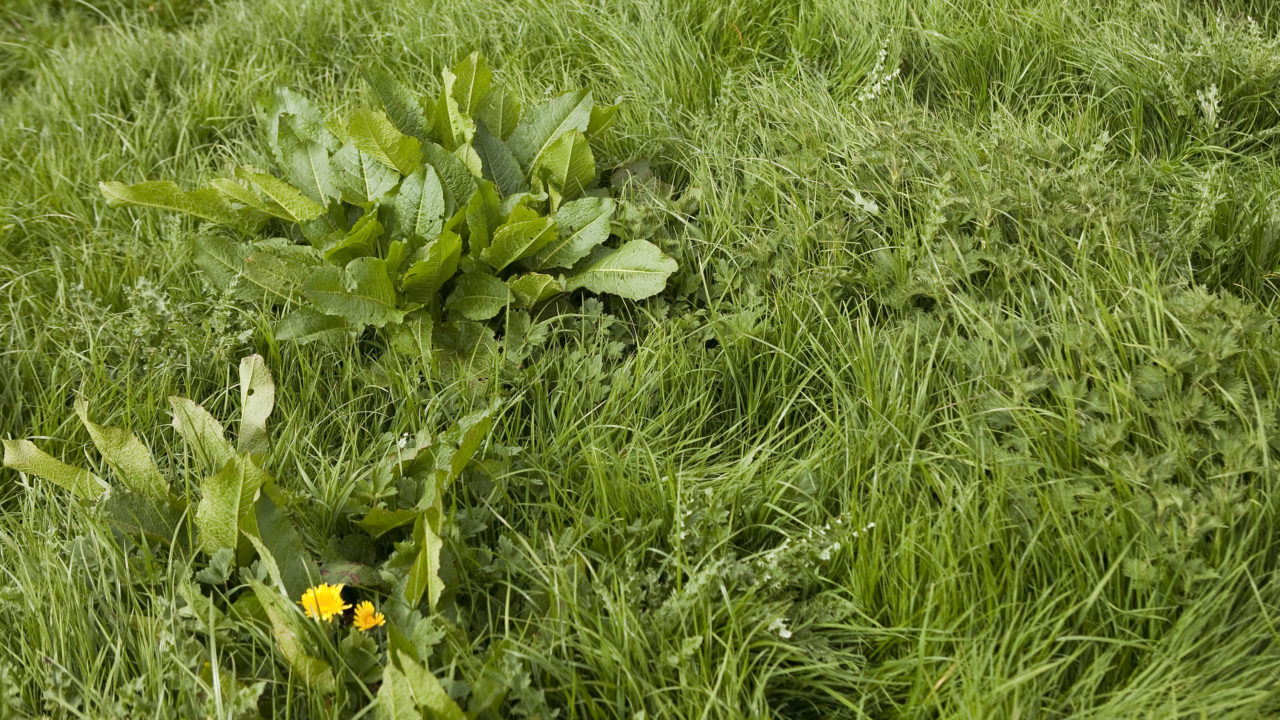Weed-infested grazing pastures are now approaching the stage for treatment with an effective herbicide.
When it comes to choosing the perfect broad-spectrum herbicide, Forefront T has become the product of choice for a growing number of farmers seeking to clean pastures of a wide spectrum of weeds.
Manufactured by Corteva Agriscience, Forefront T contains two chemicals, aminopyralid and triclopyr.
This powerful combination makes it the perfect choice for docks, thistles and nettles, as well as a range of other weeds such as buttercups, chickweed and dandelions. It is also ideal for ragwort.
Chris Maughan, technical manager with Whelehan Crop Protection, which distributes Forefront T and other herbicides from the Corteva Agriscience stable on the Irish market, advised that best results are achieved by spraying when weeds are actively growing and are at the right stage for a good kill of the root system.
“Docks should be 15-25cm high or across and before a seed head begins to show. Thistles should have four to 10 leaves and be 15-25cm high. Nettles should be sprayed before flowering.
“If weeds are gone beyond these stages, it is best to top them and spray with Forefront T after about three weeks regrowth, when they should be at the right stage for an effective kill,” Maughan said.
Apply Forefront T as a single application at 2L/ha in a minimum 200L water/ha. Keep stock off the pasture for seven days after spraying.

Forefront T – perfect for ragwort
Forefront T is the perfect herbicide for controlling the noxious weed ragwort, which can be lethal to livestock.
A biennial plant, it grows as a rosette in the first year. In the second year, the rosette sends up one or more leafy unbranched stems which produce numerous flower heads. It can be up to a metre high.
Spraying with Forefront T is the best route to effective control. Apply the herbicide when the ragwort is in the rosette stage and during a period of active growth with warm temperatures (above 10°).
Animals should be kept off pasture until the ragwort has completely disappeared.
Killing docks after silage is cut
The ideal time to kill docks in silage or hay swards is to spray with the specialist docks herbicide Doxstar Pro before the silage is cut.
Doxstar Pro contains two powerful chemicals, triclopyr and fluroxypyr, ensuring the most effective kill of the dock root system.
Spraying before silage is cut ensures optimum yield and quality and results in a clean sward for a subsequent cut or grazing.
For the most effective control, docks should be sprayed when they are actively growing and are 15-25cm high or wide. It is important to leave at least three weeks between spraying and cutting the crop in order for the chemicals to get fully translocated down to the root system.
Where the opportunity to spray was missed before silage was cut, Chris Maughan said that every effort should be made to apply Doxstar Pro to the aftergrass to ensure a clean, productive sward for the rest of the season and beyond.
“Docks should be at the right stage for effective treatment with Doxstar Pro about three weeks after silage is cut,” advised Chris.
Apply Doxstar Pro at a rate of 2L/ha as a single application or two applications of 1L/ha six to 12 months apart.
Use a minimum of 300L water/ha (30 gal/ac) and keep animals off the pasture for seven days after spraying.

Thistlex is tailor-made for thistles
Where thistles are the sole or major weed in a sward, Thistlex is the herbicide of choice.
It contains the active ingredients triclopyr and clopyralid, which are absorbed right down to the roots of the thistles.
Research has shown that animals leave 30cm ungrazed around each thistle plant. Just one thistle per 20m² is equivalent to a 1% loss in grass dry matter (DM).
Therefore, 50 thistles per 20m², which is very common in thistle-infested swards, can mean a drop of 50% in dry matter yield. Thistles are also an animal health risk, spreading diseases such as orf, pink eye and mastitis.
Chris Maughan stressed that timing of the Thistlex spray is vital to a successful kill.
“For best results, thistles should be actively growing, have four to 10 leaves, be 15-25cm high and before a seed head appears.
“If they have gone beyond this stage, it is best to top them and spray with Thistlex when they have regrown to the correct stage,” he said.
Spot treat weeds with Grazon Pro
Grazon Pro is proven as the ideal and highly cost-effective product for spot treatment for a wide range of weeds. Nettles; thistles; briars; docks; buttercups; gorse; cow parsley; and hogweed are among the weeds it controls.
It contains two powerful root killing ingredients – triclopyr and clopyralid. Triclopyr is particularly effective on brushwood, scrub and nettles. No other product on the market for knapsack application has as high a concentration of this powerful chemical.
Grazon Pro is the perfect solution for weeds around ditches, fences and gateways. Also, where weed infestations across a field or paddock are 5% or less, it is the most cost-effective choice.
It should be applied at a rate of 60ml in 10L of water using a conventional knapsack sprayer, a quadbike sprayer or a suitable lance on a tractor mounted sprayer.

